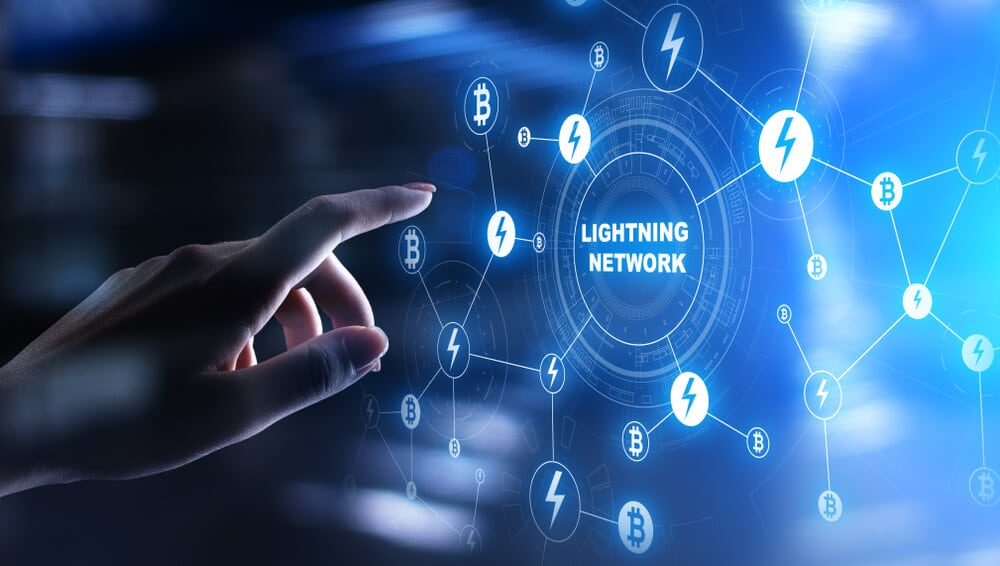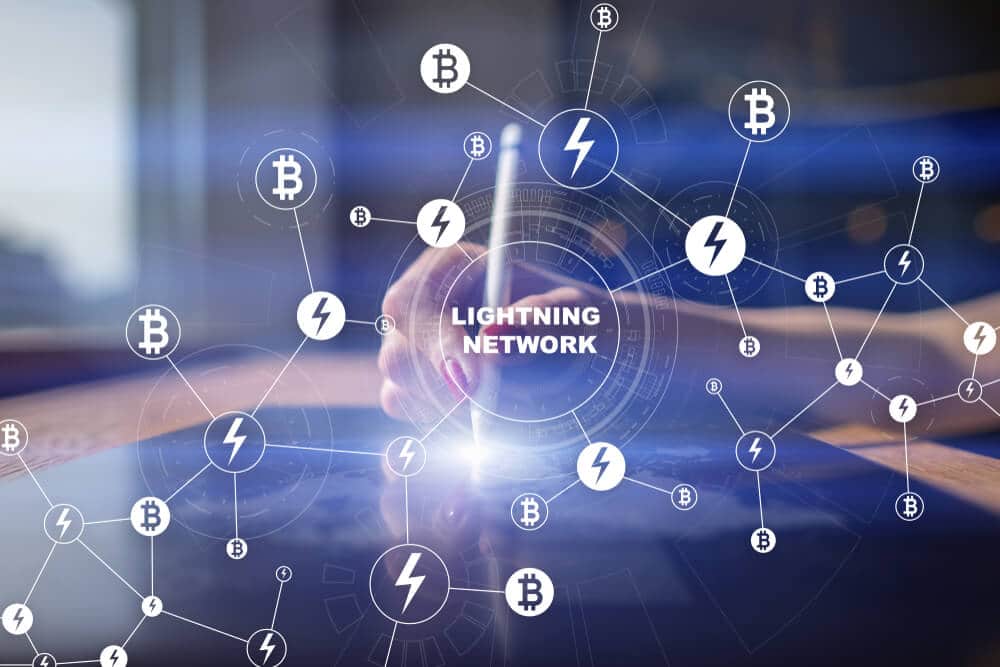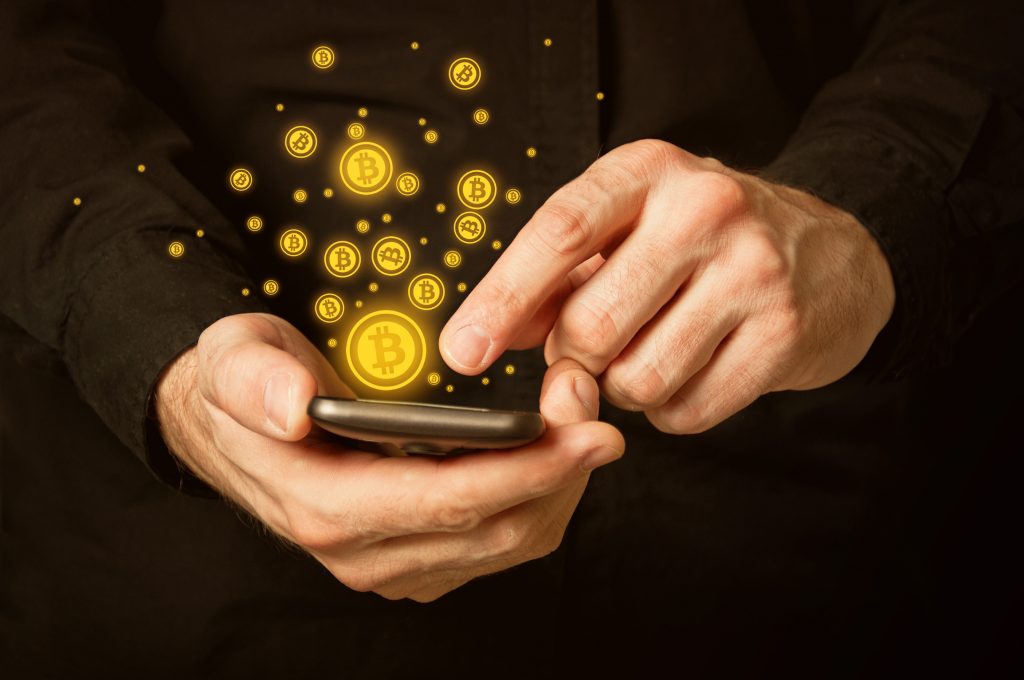How do I deploy my own Bitcoin (BTC) Lightning Network node?
You’re hearing about Bitcoin (BTC) more and more often, and you’ve even invested into it, but you haven’t yet dived into the bowels of the network. Well, today, you have an opportunity to take the plunge by following along with the steps needed to deploy your very own node on the Lightning Network, connect it to your phone and make Lightning payments around the world in a completely decentralised way. This is a return to the very essence of what Bitcoin truly is.

Lightning: a growing Bitcoin network
The Lightning Network (LN) is not really new to the Bitcoin ecosystem. To put it simply, the LN is a technological improvement of Bitcoin that increases transaction speed and the number of transactions per second supported by the network.
What is interesting to see today is the growing number of LN nodes. There are more than 12,000 active nodes and more than 50,000 connections between all of them. There are around 1,500 BTC in circulation on the LN.
To take a step back on these figures, we must go back to the beginning of 2021, when there were only 1,000 BTC on network, a figure that has remained relatively stable since Q2 2019. Since the beginning of the year, we have seen an increase of nearly 50% in the number of bitcoin in circulation on the network.
Although there is no exact explanation for this increase, everything suggests that El Salvador’s recent announcement to make Bitcoin a national currency played a big role. LN mobile apps like Strike are still among the most downloaded on the country’s app stores.

What hardware is needed to run a lightning node?
Now is the time to go into a little more detail on how to deploy your own node on the network. Don’t panic! You’ll see that it’s as simple as following a cooking recipe.
First of all, you will need the right ingredients; once again, no rocket science here. A lightning node does not mean that you will need to set up a rig to rival the largest mining farms in Kazakhstan.
The first ingredient you will need is a small microcomputer: the Raspberry Pi 4. Using this microcomputer is much more convenient than using your own personal computer, because you can leave it running and not use up large storage space on your own PC.
We will complete the shopping list with a 1 TB SSD hard drive, an SSD enclosure type case to connect it to your Raspberry Pi 4, an SD card of at least 16 GB and finally a good old ethernet cable and connection to a power source.
How to get started with your LN node
First, you will download an open-source programme called balenaEtcher. This allows you to add data to an SD card. Then, connect your SD card to your computer.
Secondly, download Umbrel from their website, then follow the instructions on balenaEtcher to drop Umbrel onto your SD card. Once everything is good with these steps, you can transfer your SD card from your computer to the Raspberry Pi 4.
Thirdly, once Umbrel is installed, you will be able to connect from your computer or any other device connected to the same network as your Raspberry Pi 4. All you have to do is enter http://umbrel into your internet browser.
Fourthly, you are going to have to download the entire Bitcoin blockchain. As you can imagine, this file is quite big (341.71 GB) and may take several days to download. It is interesting to note how the download progresses. It is faster at the beginning and gradually slows down in line with the increase in block size over the years.
How to open your own payment channel on the LN
A payment channel on the LN is a direct line between two wallet addresses. Payment channels are a core feature of the Bitcoin Lightning Network: they allow it to increase the speed of transactions compared to the classic Bitcoin network.
You can open a new channel from your Umbrel dashboard. You also have the possibility to do it from the different Lightning applications accessible from the app store offered by Umbrel.
Then, configure your channel by entering the address of the node you want to connect to make a payment. Node addresses can be directly accessed on sites like 1ML. Once your channel is open, you will be able to send payments to anyone connected on the network.
How to connect your phone to your Lightning node
Connecting your node to your smartphone is a very exciting step, as it will let you carry out mobile transactions wherever you are on the planet.
To do this, you can download the Zap app on your phone. It is a Bitcoin wallet that connects to your Lightning node. Zap was developed by the one and only Jack Mallers, who is also behind Strike.
After downloading the Zap wallet, all you have to do is go to your Umbrel dashboard to connect your node to your newly created wallet. A QR code appears on the page, and by scanning this, the two are paired up.

How to make Lightning Network payments
This is the moment you’ve all been waiting for: the chance to spend bitcoin on the Lightning Network. To do this, scan the wallet address of the person you want to send sats to, and enter the number of sats to send on your Zap wallet app. The payment gets confirmed in a few seconds – sometimes instantly – and the transaction fees are almost nonexistent.
The low fees and speed of transactions make the Lightning Network a powerful tool for making small transactions. This type of payment is a challenge on decentralised networks and traditional payment networks alike, but the LN manages to solve it seamlessly.
Finally, paying in sats on the LN allows ayou put into perspective the 1,500 BTC present on the network. As a reminder, 1 bitcoin = 100,000,000 sats, the smallest unit of measurement of Bitcoin.
Over to you!
We hope that this article has helped you to set up your own node on the Bitcoin Lightning Network, or at least given you some food for thought about setting one up in the future. By using the LN, you directly access the network without having to go through intermediaries, and thus get closer to Satoshi Nakamoto’s vision of Bitcoin as a decentralised and global payment network without a central control body.
Maximize your Cointribune experience with our "Read to Earn" program! For every article you read, earn points and access exclusive rewards. Sign up now and start earning benefits.
Passionné des technologies Blockchain et des cryptomonnaies depuis plusieurs années, je crois fermement à l’adoption massive qui arrive. Toujours à l'affût des dernières tendances sur le marché des cryptomonnaies, je prends plaisir à partager avec vous tous ses secrets !
The views, thoughts, and opinions expressed in this article belong solely to the author, and should not be taken as investment advice. Do your own research before taking any investment decisions.